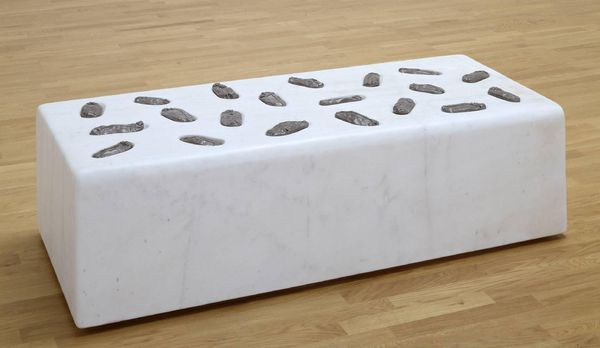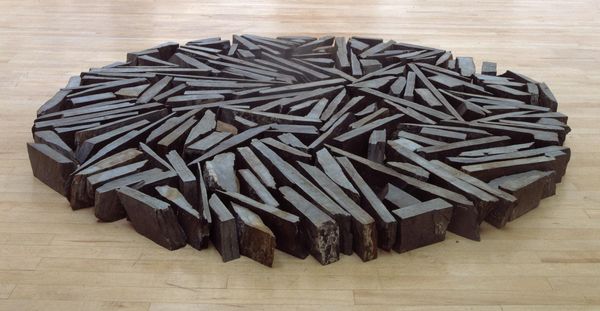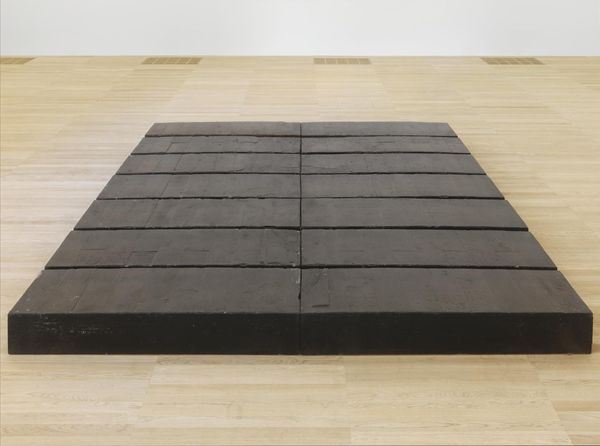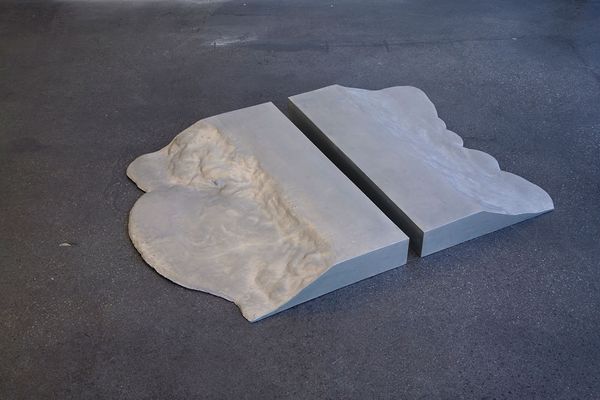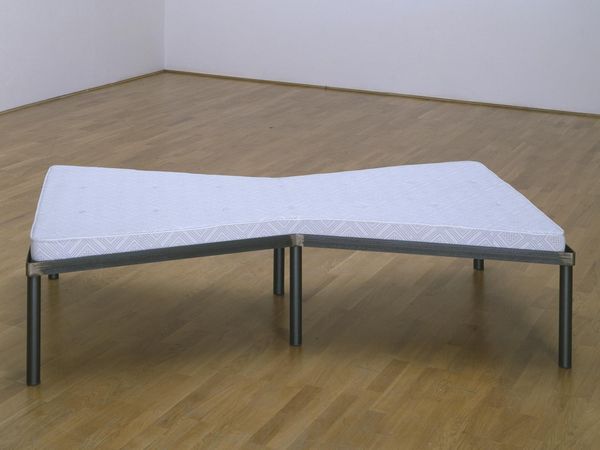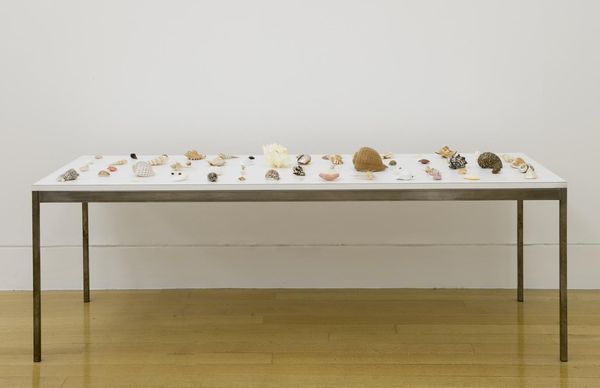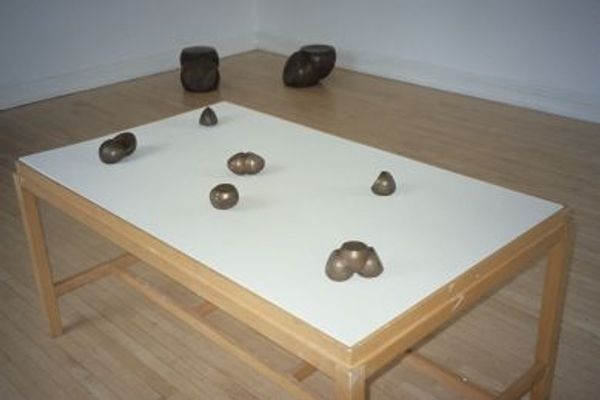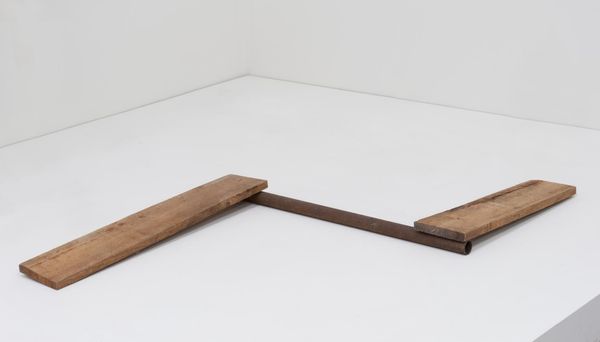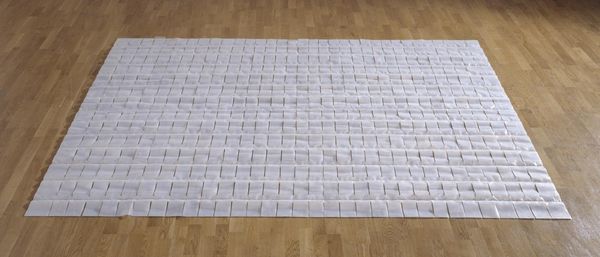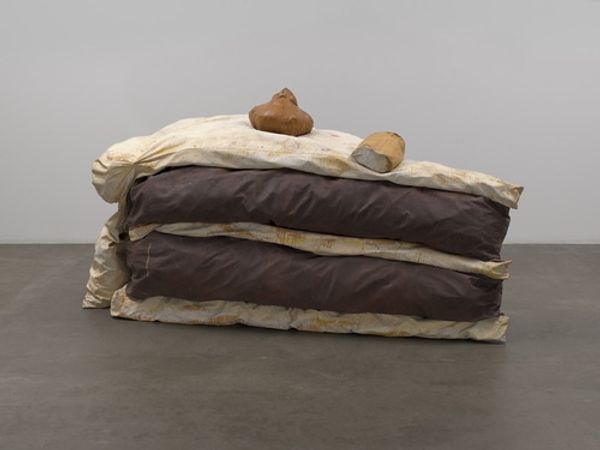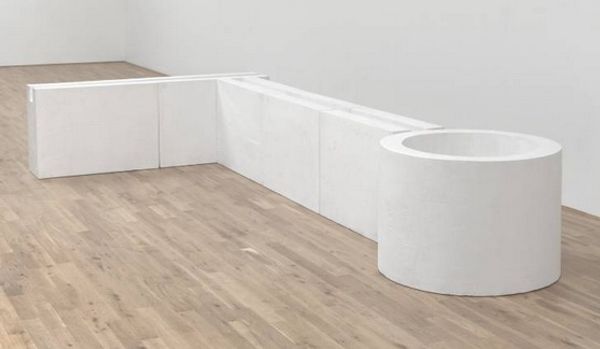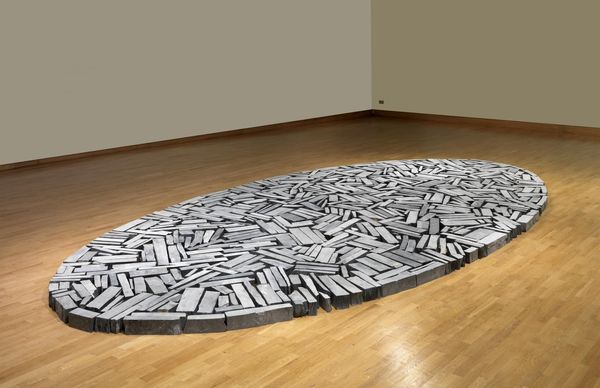
Dimensions: 305 x 1220 x 510 mm
Copyright: © Veronica Ryan | CC-BY-NC-ND 4.0 DEED, Photo: Tate
Editor: So, here we have Veronica Ryan's "Quoit Montserrat," part of the Tate Collection. It's quite striking—a large, white form topped with these dark, almost seed-like shapes. There's a stillness to it, but also a hint of something growing, maybe? What do you see in this piece? Curator: Ah, "Quoit Montserrat"... I'm immediately drawn to the contrast—the stark, geometric base versus the organic forms scattered on top. It’s like a memory garden, isn’t it? Those seed-like forms, for me, speak of potential, but also of loss. Montserrat is Ryan's birthplace, devastated by volcanic eruptions. It's as if she's asking, what can grow from devastation? Editor: That makes me see the piece in a new light, from stillness to resilience. Thanks! Curator: And thank you; I might have overlooked the stillness if you hadn't pointed it out!
Comments
Join the conversation
Join millions of artists and users on Artera today and experience the ultimate creative platform.
tate 6 months ago
⋮
Ryan made this work while she was artist in residence at Tate St Ives (1998-2000). Asked to respond to Barbara Hepworth’s work in situ, she worked in Hepworth’s studio, using marble which had been donated by the Hepworth Estate. Although anxious not to emulate Hepworth’s work, Ryan found her studio a ‘good environment in which to concentrate’ and felt as if she had found a ‘friendly muse’ there (Ryan, Veronica Ryan – Artist in Residence: Quoit Montserrat, exhibition leaflet, Tate St Ives 2000, p.2). The Cornish peninsula strongly reminded Ryan of the Caribbean island of Montserrat, where she was born and had lived until her family emigrated to the United Kingdom when she was one and a half years old. During her residency she also made a related work, owned by Tate, Mango Reliquary, 1998 (Tate T07771).
